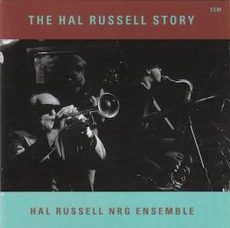
Daily Dose Of Jazz…
Hal Russell was born Harold Russell Luttenbacher on August 28, 1926 in Detroit, Michigan. Raised in Chicago, Illinois from the eighth grade, he began playing drums at age four, but majored in trumpet at college. He subsequently drummed in several big bands, including those of Woody Herman and Boyd Raeburn.
As with many young players in the mid-1940s, Russell’s life was irreversibly changed by bebop. In the 1950s he worked with Miles Davis, Billie Holiday, Sonny Rollins, John Coltrane, and Duke Ellington. During this period he succumbed to drugs and was a heroin addict for ten years. In 1959, he joined the Joe Daley Trio, whose Newport’ 1963, which was mostly studio material, was reputedly one of the earliest free jazz records.
The early 1970s saw Hal as the regular percussionist for the band at the suburban Chicago Candlelight Dinner Playhouse. He played mostly drums, but occasionally vibes and keyboards. By the end of the decade he formed the NRG Ensemble, which featured saxophonist Mars Williams, multi-instrumentalist Brian Sandstrom, and percussionist Steve Hunt, among others. During this period he started playing tenor and soprano saxophone and trumpet, in addition to drums and vibes.
Issuing his first album in 1981 for the Nessa label, in the late Eighties the group began playing frequently in Europe, and began recording for ECM with The Finnish/Swiss Tour. In addition to the NRG Ensemble, Russell always maintained several bands, the rock-oriented trio NRG 3 and The Flying Luttenbachers.
Tenor and soprano saxophonist, trumpeter, vibraphonist and drummer Hal Russell, shortly after completing the semi-autobiographical album The Hal Russell Story, transitioned from a heart attack on September 5,1992 in La Grange, Illinois.
More Posts: bandleader,drums,history,instrumental,jazz,music,saxophone,trumpet,vibraphone
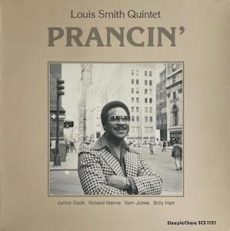
Requisites
Prancin’ ~ Louis Smith Quintet | By Eddie Carter
The Louis Smith Quintet provides this morning’s subject with their 1979 album, Prancin’ (SteepleChase Records SCS 1121). It was Smith’s second release for the label and his fourth as a leader. This session also marks a reunion with Junior Cook, who he played with briefly in The Horace Silver Quintet twenty-one years earlier. Their only recorded appearance together is on Blue Lights, Volumes 1 and 2 by Kenny Burrell. Here, Louis Smith is featured on flugelhorn (tracks: A2, B2) and trumpet (A1, A3, B1, B3), alongside Junior Cook on tenor sax, Roland Hanna on piano, Sam Jones on bass and Billy Hart on drums. My copy is the original Danish Stereo album.
One For Nils, Smith’s first of five originals, is a tune written for producer and label founder Nils Winther. The quintet sets the beat in its opening chorus. Louis gets right to the point first; then Junior comes in with a smooth, relaxed reading. Roland feeds the finale with fresh ideas ahead of the theme’s reprise and exit. Chanson De Louise is Smith’s beautiful tribute to his wife, Harriet Louise. Hanna introduces this ballad softly, leading to a delicately tender theme by Smith and Cook. The leader’s opening solo is affectionate and touching; next, Hanna provides serene beauty to a short statement into the ensemble’s gentle ending.
Ryan’s Groove is dedicated to a friend and fellow teaching colleague and takes off from the quintet’s rousing theme. Junior gets things off to a sizzling start; then Louis slices through the second reading like a hot knife through butter. Roland comes in next, followed by Sam’s brisk bass, leading to the climax. The title tune, Prancin’, starts Side Two with Hanna’s introduction segueing into the group’s lively melody. In the opening solo, Cook immediately gets the listener’s attention; then Smith keeps the temperature up in the following statement. Hanna makes the third solo come alive with a nice, happy feeling. Hart closes with a quick exchange between both horns preceding the finish.
I Can’t Get Started by Vernon Duke and Ira Gershwin is one of the timeless jazz standards. Louis is the only horn, and the rhythm section works in perfect symmetry on the opening chorus. The leader’s flugelhorn brings out the song’s lyrical beauty in a gorgeous interpretation that’s the icing on the cake into a gentle conclusion. Fats is Smith’s tribute to trumpeter Theodore “Fats” Navarro. The album’s closer gets off to a good start with the front line’s introduction and melody. Hanna, Cook, Smith, and Jones give four solos that provide a perfect exclamation point to this enjoyable blowing session.
Nils Winther produced Prancin’, and Elvin Campbell was the recording engineer. The album sounds incredible from start to finish. It has a breathtaking soundstage that brings the musicians to your listening room with exceptional clarity. The record is also a great pressing that’s silent until the music starts. Louis was an equally excellent composer, as the tunes here demonstrate. If you’re in the mood for Hard-Bop and Modal Jazz, I offer Prancin’ by The Louis Smith Quintet for your consideration on your next record shopping trip. It’s a terrific album with tight musicianship that hits it out of the park and is an absolute delight!
~ Blue Lights, Volume 1 (Blue Note BLP 1596/BST 81596), Blue Lights, Volume 2 (Blue Note BLP 1597/BST 81597) – Source: Discogs.com ~ I Can’t Get Started – Source: JazzStandards.com © 2023 by Edward Thomas Carter
More Posts: choice,classic,collectible,collector,flugelhorn,history,instrumental,jazz,music
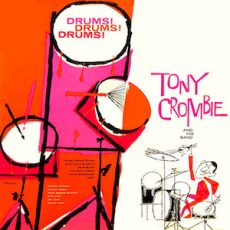
Daily Dose Of Jazz…
Tony Crombie was born Anthony John Kronenberg on August 27, 1925 in London, England’s East End Jewish community. A self-taught musician, he began playing the drums at the age of fourteen. He was one of a group of young men from the East End of London who ultimately formed the co-operative Club Eleven bringing modern jazz to Britain. He went to New York with his friend Ronnie Scott in 1947, witnessing the playing of Charlie Parker and Dizzy Gillespie, he and like-minded musicians such as Johnny Dankworth, and Scott and Denis Rose, brought be-bop to the UK. This group of musicians were the ones called upon if and when modern jazz gigs were available.
In 1948, Crombie toured Britain and Europe with Duke Ellington, who had been unable to bring his own musicians with him, except for Ray Nance and Kay Davis. Picking up a rhythm section in London, he chose Crombie on the recommendation of Lena Horne, with whom Crombie had worked when she appeared at the Palladium.
By 1956 Tony temporarily left jazz to set up a rock and roll band he called The Rockets, modeling themselves after Bill Haley’s Comets and Freddie Bell & the Bellboys. They released several singles for Decca and Columbia. He is credited with introducing rock and roll music to Iceland, performing there in 1957.
The next year the Rockets had become a jazz group with Scott and Tubby Hayes. During the following year, Crombie started Jazz Inc. with pianist Stan Tracey. During the Sixties he scored for television and film and established a residency at a hotel in Monte Carlo. He toured the UK with Conway Twitty, Freddy Cannon, Johnny Preston, and Wee Willie Harris.
In the early 1960s, Crombie’s friend, Victor Feldman, passed one of his compositions to Miles Davis, who recorded the piece on his album Seven Steps to Heaven. The song, “So Near, So Far”, has been recorded by players including Joe Henderson, who named a tribute album to Miles Davis using the title.
Over the next thirty years, Crombie worked with many American jazz musicians, including Ben Webster, Coleman Hawkins, Illinois Jacquet, Joe Pass, Mark Murphy and Eddie “Lockjaw” Davis.
After breaking his arm in a fall in the mid-1990s he stopped playing the drums, but continued composing until his death. Drummer, pianist, vibraphonist, bandleader and composer Tony Crombie, was regarded as one of the finest English jazz drummers and bandleaders, transitioned on October 18, 1999, aged 74.
More Posts: composer,drums,history,instrumental,jazz,music,piano,vibraphone
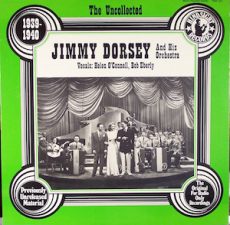
Daily Dose Of Jazz…
Sonny Lee was born Thomas Ball Lee on August 26, 1904 in Huntsville, Texas. While a student at Texas State Teachers’ College in the early 1920s he played with Peck Kelley, then moved to St. Louis, Missouri where he worked with the Scranton Sirens, Frankie Trumbauer, Gene Rodemich, Vincent Lopez, and Paul Specht.
By 1932 he had joined the Isham Jones Orchestra, remaining with Jones until 1936. Concomitantly he played with Benny Goodman in 1934-35. After this stint he went to work with Artie Shaw, Charlie Barnet, Woody Herman, and Bunny Berigan. In 1938 he joined the Jimmy Dorsey Orchestra, where he played until 1946.
Trombonist Sonny Lee, who is credited on nearly 200 recording sessions between 1925 and 1946, transitioned on May 17, 1975 in Amarillo, Texas.
More Posts: history,instrumental,jazz,music,trombone
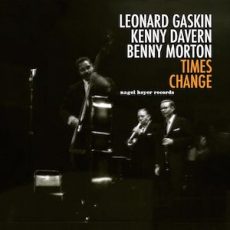
Daily Dose Of Jazz…
Leonard Gaskin was born August 25, 1920 in Brooklyn, New York. He played on the early bebop scene at Minton’s and Monroe’s in New York in the early 1940s. In 1944 he took over Oscar Pettiford’s spot in Dizzy Gillespie’s band,and followed it with stints in bands led by Cootie Williams, Charlie Parker, Don Byas, Eddie South, Charlie Shavers, and Erroll Garner.
In the 1950s, he played with Eddie Condon’s Dixieland band, and played with Ruby Braff, Bud Freeman, Rex Stewart, Cootie Williams, Billie Holiday, Stan Getz, J.J. Johnson, and Miles Davis. In the 1960s he became a studio musician, playing on numerous gospel and pop records. In the 1970s and 1980s he returned to jazz, playing with Sy Oliver, Panama Francis, and The International Art of Jazz.
Gaskin became involved in educating young people later in his life. He toured and performed at New York City schools, sharing his knowledge with elementary students with the Good Groove Band and the International Art of Jazz groups. For more than a decade, he and drummer Oliver Jackson teamed to play the European jazz festival circuit. He also regularly collaborated with Sy Oliver’s Rainbow Room Orchestra.
Capping off his career in 1994, Leonard performed at the White House’s Congressional Ball at the behest of President Bill Clinton. Although his touring schedule slowed dramatically in the decade to follow, he wrote a privately published autobiography and donated his personal jazz collection to the American Music Archives at the Smithsonian’s Museum of American History.
Bassist Leonard Gaskin transitioned from natural causes at a nursing home in Queens, New York on January 24, 2009. He was 88.
More Posts: bandleader,bass,history,instrumental,jazz,music



